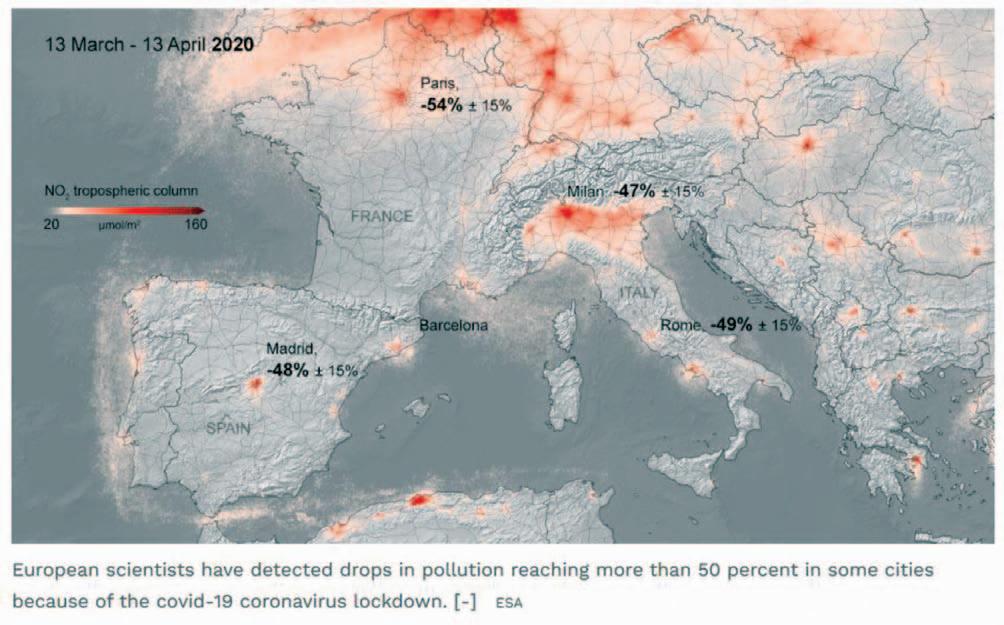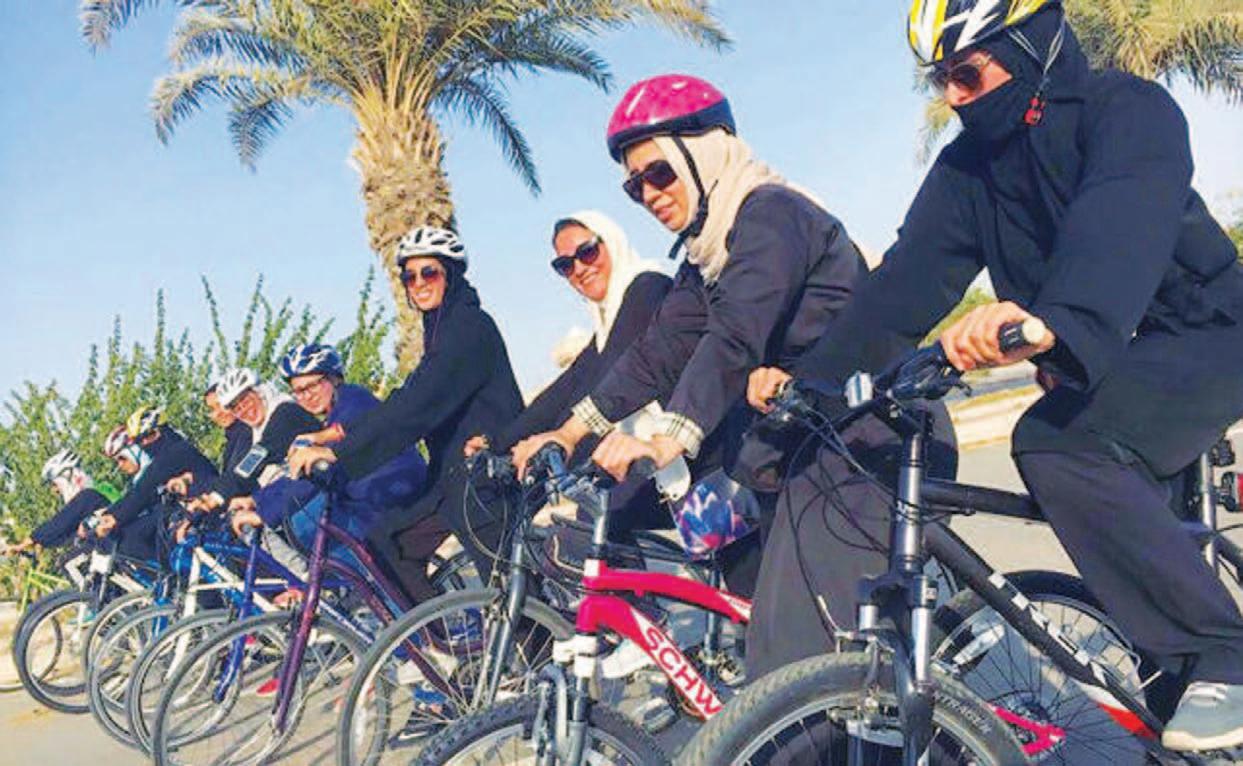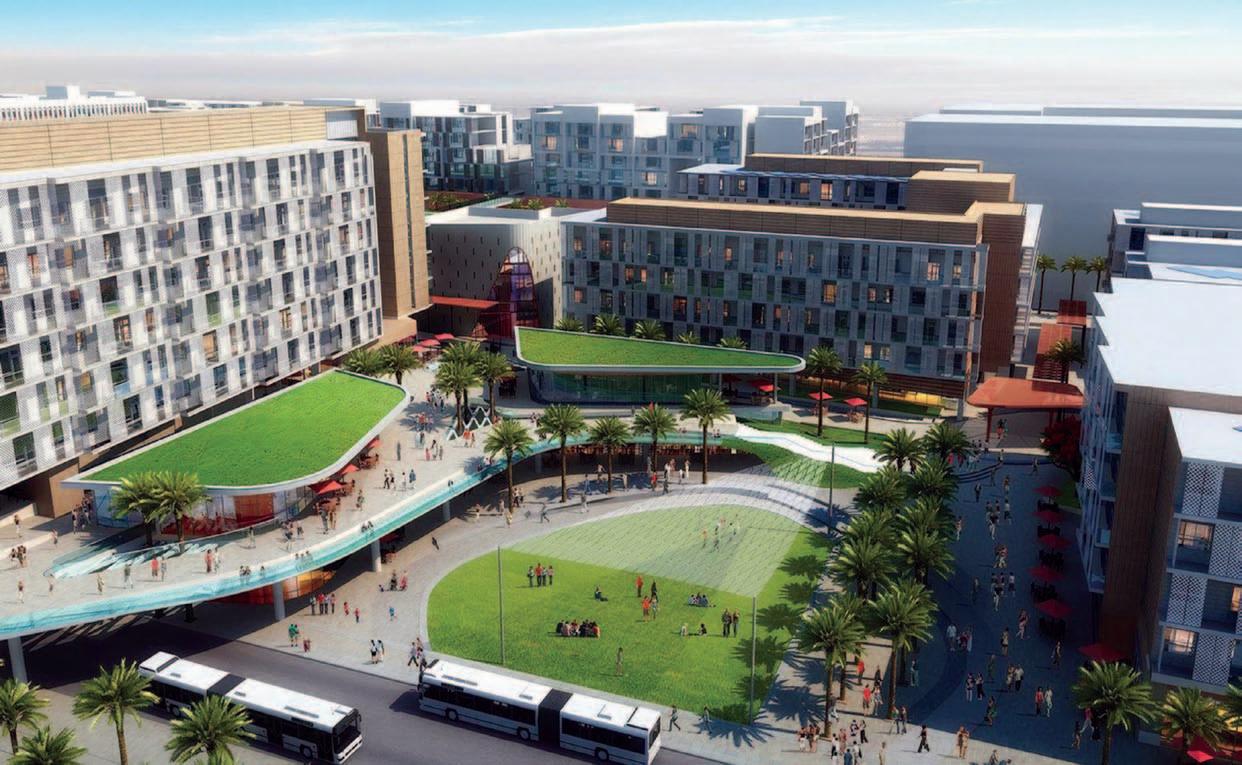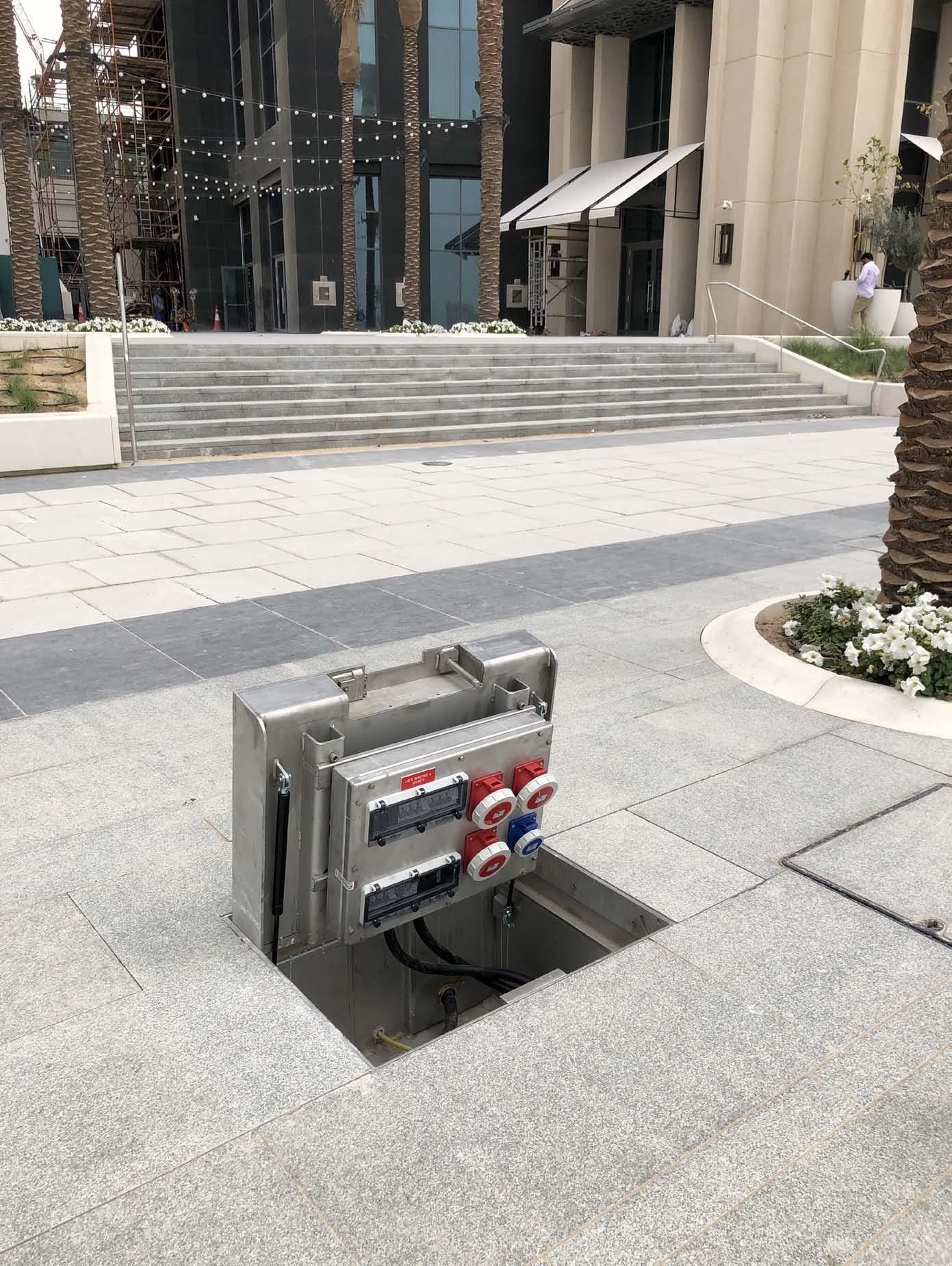
7 minute read
Times are changing, and so is how we live
from May2020
Pandemic and Urban planning
By: Laila Alawneh Associate Urban Designer - Design + Planning and Economics AECOM, Dubai The frequency and severity of pandemics cannot be predicted, but it is a known fact that pollution and poor air quality has a negative impact on our immune systems.
Advertisement
Air pollution in some cities across the world is less than half of what it was a year ago according to new data that has been documenting the impact of the lockdown as a result of Covid -19. Paris has seen nitrogen dioxide drop by 54 percent, while Madrid, Milan and Rome have seen a drop of nearly 50 percent according to scientists from the Royal Netherlands Meteorological Institute, who have been monitoring air pollution over Europe using data from the Tropomi instrument aboard the European Space Agency’s Copernicus Sentinel-5P satellite.
In Dubai, there are multiple air quality measuring stations, air pollution in Dubai in certain areas of the city has dropped below 50 percent as a result of the lockdown.
One of the strategies to decrease air pollution and lift people’s wellbeing is to allow individuals to avoid peak hours, which in response lowers traffic density during these hours. In some places around the world, a light form of lockdown has been adopted due to:
-Harsh climate -Cost of built environment in major cities -Imbalance between influx towards major cities and provision of housing or office space -Project teams living miles away from each other -Lack of local skills in a specific geographical area -Lack of space in leased facilities for businesses to grow under one roof. -Globalization of services and products -Social and medical sector needs to reach out to patients and individuals in need.
In many cases some professions leveraged from virtual workspaces by giving a freedom to build teams that work well together without being

Copenahgen


Saudi women cycling

challenged by distance, creating diverse teams from all parts of the world that work in synergy and create state of the arts solutions that are lifesaving or simply entertaining.
During the 90s if any party wanted to establish a profit or nonprofit organization, they needed to upload a website that is hosted by a data provider to reach out to interested individuals and clients. Bigger operations needed to run complex interactions on servers, such as banks, stock market, or businesses that provide services remotely to individuals around the world. Many can apply and grant a bank loan while sitting at home and conducting all the paperwork online, including legal meetings with lawyers and bank personnel.
The remote work style encouraged people to start small businesses from home. In 2005, I wanted to start my own home office after my bachelor studies to kick off my career in Architecture. All it took, was to launch a website where clients could see my work and the services I was offering. Before that I registered the company on a government entity website, giving information of the type of company, number of employees, expected annual income, and the name of the company for government listing. This was all done from my apartment in Tampere, Finland.
Such remote operations became a must to keep up with everyday pace and momentum of advancement, but most notably to the lack of space in dense cities and slow public transportation expansion to absorb the growing need of mass transportation which is still mainly dependent on fuel operated vehicles.
Alternative living and working styles might have picked up earlier in Europe, but evidently has been adopted promptly in the Arab Gulf Region, which proves that the region has been ready for it a long time ago for a wide range of business and industries.
Remote living doesn’t only include remote working or studying, on a social level, the average marriage age in 2020 is between 32 and 38 for young people living in cities, who usually
Masdar Institute Neighbourhood, Design by CBT Architects

work long hours and in most cases have a long commute, a study in northern Europe showed that single person households are on continuous rise.
As city life expenses keep on rising, many operations of companies around the world were outsourced to operate remotely such as accounting, product localization, hardware manufacturing, among many others, by dispersing operations in less crowded cities.
During my work in Finland, our division was developing a research-based method for optimizing workspace aided by a government funded research (VTT). Businesses wanted to know details about the best work environment, but also best locations to locate their offices. A study showing the locations of where most of the employees are living and where the majority of children’s schools are, showed concentration in suburbs and certain neighbourhoods in the city. This is where new head offices chose to position their premises, in order to cut down on time and energy consumed on commuting, to allow employees to get back home to their children earlier. Many businesses in Finland introduced the work from home policy up to two days a week. The aim behind this was to increase their employee’s productivity by increasing their quality time with their families which clearly affected their productivity.
Concepts such as sustainability, data driven design, and smart city management that were treated as buzz words for a long time, are becoming crucial to apply to city planning. Optimally governments would start adopting these concepts and stand as a role model for the rest to follow. There are many good examples around, such as Helsinki in Finland, Copenhagen in Denmark, and Abu Dhabi in UAE. These cities introduced re-formulation and implementation of these concepts with the goal of improving the quality of life of current generation while securing a healthy future for the next one.
The need to increase resilience of regional and urban forms and systems is urgent for societies to take control over human lives. Covid-19 proves that practices of how we live our lives and consume resources are outdated.
Masdar Central Park, Design by AECOM

That brings us to understand major factors that build resilience for implementing new urban strategies and policies: Diversity: Designing urban infrastructure that allows a wide range of lifestyles to co-exist and interact together, such will reshape the dynamics of groups and enhance economy, in addition a balance in using resources. One form city and one lifestyle fits all is not realistic, designing Infrastructure to consume resources based on peak demand is causing depletion in resources that couples up with negative environmental impact. Connectivity: Connection across urban centres provides synergy. People require polynuclear urban districts that interconnect, with regular momentum of communication among as many districts as possible, it cuts down on unnecessary vehicular trips (reducing carbon emissions) and allows easy access of services by vulnerable groups.
Holistically, it allows individuals to enhance King Abdulaziz Historical Center, KSA productivity and quality of services, due to smooth flow of data and information provided in real time. Data recycling not only saves on resources but improves economies. Health and happiness: City planning that responds to human biological needs and provides autonomy on how we live and work. Homo sapiens biological formation is still the same as it was thousands of years ago, it doesn’t develop or adapt to fast ecological or industrial changes, we are still born to walk, sweat, be outdoors, breath clean air, and eat clean food, a lack of these basics would have a negative impact on our health and psychology. The simplest example is having the luxury to walk or cycle to work, to school, to social hubs, globally this has proven positive impact on health, it also reduces traffic trip generation on roads which lowers pollution and saves on unnecessary consumption of resources.
Optimizing our current cities to respond to these factors, could generally increase our health and happiness, and at the same time allow us to respond in agility to future pandemics.
The First Specialised Landscape Magazine in the Middle East In Ground Power Units, excellent for open air areas with events and exhibitions where temporary power is required.

In Ground Power Units
WTB Middle East FZE Jebel Ali Free Zone, P.O Box: 261378, Dubai, UAE 13 T +971 4480 9397 | f +971 4886 0701 Burdens Middle East Trading LLC Dar Al Salam Building, office 962, Nr Al Lulu St, Abu Dhabi, UAE








